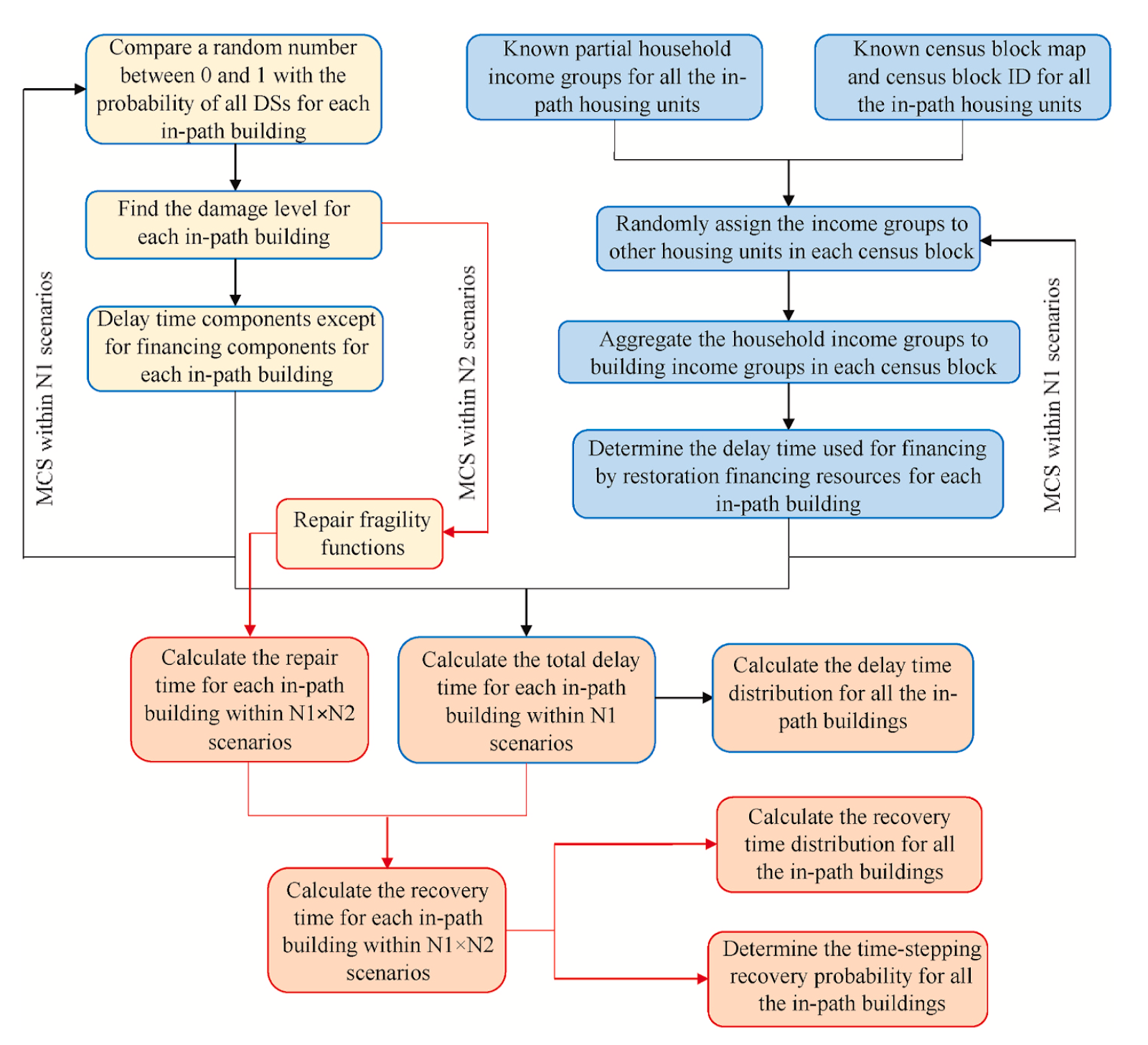Data Reuse Case Studies
Model Development
Quantitative modeling of residential building disaster recovery and effects of pre- and post-event policies

DesignSafes data-publishing capability has enabled a cross-disciplinary study between structural engineers and social scientists to understand how social circumstances, in addition to the building's structural aspects, affect community resilience. A recent study by Wang and van de Lindt (2021) published in the International Journal of Disaster Risk Reduction explores how social factors, such as household income, and structural considerations, such as whether a retrofit had been performed recently, affect the time to recovery following a tornado. The authors, who are both structural engineers, learned about the Detailed Household and Housing Unit Characteristics dataset (Rosenheim 2021) through their on-going collaboration with its author Nathanael Rosenheim. The authors hope that their work will encourage more natural hazard researchers to seek out cross-disciplinary collaborations and provide insight to policy and decision makers on the holistic set of social and technical factors that affect a communitys ability to recover after a natural disaster.
Publication Reusing Data:
Wanting (Lisa) Wang and John W. van de Lindt, (2021) Quantitative modeling of residential building disaster recovery and effects of pre- and post-event policies, International Journal of Disaster Risk Reduction, 59, 102259, https://doi.org/10.1016/j.ijdrr.2021.102259.
Dataset Reused:
Rosenheim, Nathanael (2021) Detailed Household and Housing Unit Characteristics: Data and Replication Code. DesignSafe-CI. https://doi.org/10.17603/ds2-jwf6-s535.





